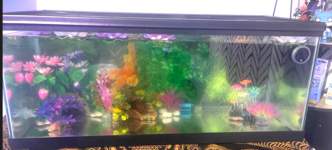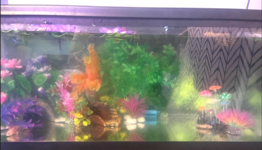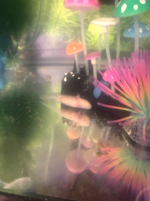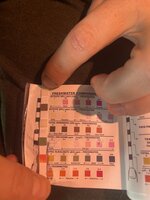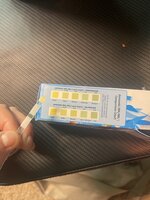__notmarykate
New member
Good morning!
Happy owner of two axos here. 1 GFP Clean Lucy and 1 White albino. The albino has a slight deformation of one of their arms. It's shorter than the other which causes him to lean when he lays, as you can see pictured. The problem is, Lt. Dan, the albino, isn't growing. Water parameters are on point, both of them are eating.. Lt. Dan might be eating a little less. Any general advice here? Is there something wrong with Lt. Dan? He is super pale, but he hasnt gone to the top for gulps of air and mostly just chills like you see in the picture. Any advice would be great.. I am worried about him. FYI, I only put the lights on the get a good picture. Their water stays between 67-69 degrees f.
Happy owner of two axos here. 1 GFP Clean Lucy and 1 White albino. The albino has a slight deformation of one of their arms. It's shorter than the other which causes him to lean when he lays, as you can see pictured. The problem is, Lt. Dan, the albino, isn't growing. Water parameters are on point, both of them are eating.. Lt. Dan might be eating a little less. Any general advice here? Is there something wrong with Lt. Dan? He is super pale, but he hasnt gone to the top for gulps of air and mostly just chills like you see in the picture. Any advice would be great.. I am worried about him. FYI, I only put the lights on the get a good picture. Their water stays between 67-69 degrees f.

